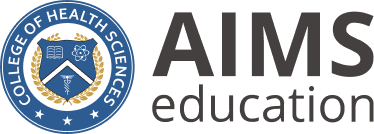Diagnostic Cardiac Sonographer Salary and Job Outlook
February 8, 2020
Looking for a challenging and rewarding allied healthcare career? Look no further! Diagnostic cardiac sonographers use ultrasound technology to create precise 3D images of the heart that help detect heart abnormalities or irregular blood flow.
If you’re interested in working with the latest medical technologies, saving lives, and earning a great living, becoming a diagnostic cardiac sonographer (or echocardiographer) is an excellent career choice. It’s also one of the fastest growing fields in the allied health sector.
We’ve researched the facts and figures from the Bureau of Labor Statistics to find the best cardiac sonography opportunities in the United States. Which state offers the best opportunities and salaries? What are the cardiac sonographer’s career paths? Read on to learn more!
How Much Does a Diagnostic Cardiac Sonographer Make?
With the Bureau of Labor Statistics projecting job growth of 14% over the next decade for cardiac sonographers, and an average salary of nearly $67,000, there’s never been a better time to pursue a diagnostic cardiac sonographer career.
Let’s take a closer look at the job opportunities for diagnostic cardiac sonographers available throughout the United States.
Cardiac Sonographer Job Outlook
Diagnostic cardiac sonographers (also known as echocardiography technologists) use ultrasound machines, laptops, and transducers to create images of the inside of patients’ hearts.
Since the process of ultrasound imaging and evaluation is typically non-invasive, cardiac sonographers are one of the first health professionals patients see to determine the source of heart-related issues.
Employment opportunities for diagnostic cardiac sonography are booming right now. The Bureau of Labor Statistics forecasts that from 2018-2028, the job field will grow 14%. This rate is higher than the rates in almost every other sector in the country.
Employment of cardiovascular technologists and technicians, including vascular technologists, is projected to grow 7 percent from 2018 to 2028, faster than the average for all occupations.
Why Are Job Openings for Cardiovascular Sonographers Expected to Grow Faster Than Average?
As ultrasound and imaging technology advances, medical professionals are better able to detect complications without expensive, invasive methods. Because of its affordability, ultrasounds are typically the first tool to use for diagnosis.
Since the number of medically insured individuals is expected to increase due to federally-mandated health reform, more people will visit medical centers for diagnosis and treatment.
Growing Baby Boomer Population
According to the Administration for Community Living’s 2018 Profile of Older Americans, in 2017, 15.6% (50.9 million) of the US population was over the age of 65. By 2060, experts predict the number to reach 23.5% (98 million).
On average, over half of the people over the age of 65 live with two or more chronic conditions like diabetes, heart disease, and cancer. For them, the need for regular, non-invasive check-ups is of great importance, and also much more affordable for the third-party payers who cover them.
What Salary Can a Diagnostic Cardiac Sonographer Expect?
The average salary for diagnostic cardiac sonographers reflects the growing demand for certified professionals. BLS’ most recent research from May 2018 states that the median national pay for these allied healthcare specialists hovered around $67,080 (or about $32.25 per hour). Nationally, the annual salary for the lowest 10 percent of cardiovascular techs was $38,640, while the top 10% received nearly $72,510.
Of course, just like any allied health career, wages and salaries vary across each state and urban area.
For instance, cardiac sonographers in Florida could expect to earn around $71,000 per year. In comparison, an applicant with the same training and certifications might expect to receive around $83,000 per year in California. If the professional lives in the Bay Area, this annual salary can increase even more. This, of course, reflects the rent prices which are the highest in the country.
Which Facilities Offer the Most Career Opportunities?
Diagnostic cardiac sonographers can find a range of public and private opportunities for employment. Hospitals are usually the primary employer of those professionals. Not only do they lead in terms of hiring because the demand for the sector is high, but they also can provide the necessary facilities and equipment.
Career opportunities at private doctors’ offices, medical clinics, and diagnostic imaging centers are less common but still exist. Cardiac sonographers who find a position in them can expect a slightly higher average annual salary.
Another difference between the hospital and clinic settings could be observed in the work pace and workload. Cardiovascular sonographers employed by hospitals work in a more fast-paced environment with an unpredictable schedule, compared to those recruited by clinics and diagnostic centers, where patients often schedule their appointments in advance. A hospital might require on-call hours, as well as night or weekend shifts.
Moving to Another State
One of the best parts of becoming a registered cardiac sonographer is the flexibility and ease of finding employment in other states. Currently, only four states – New Mexico, New Hampshire, North Dakota, and Oregon – have passed legislation mandating licensure from their respective governments. This means you can easily apply for jobs in the other 46 states.
According to the BLS, the states with the highest number of cardiac sonographers employed are California, Texas, Florida, New York and Pennsylvania. Although not all states require diagnostic cardiac sonographers to be licensed, most organizations will prefer certified candidates.
Start Building a Successful Cardiac Sonographer Career Today!
The typical entry-level requirement for these positions is either an associate’s degree or completion of an echocardiography certificate program. With the right training and competence, the echocardiography job outlook is very strong. Prospective sonographers will graduate with minimal debt and enter into a job market with fantastic opportunities.
There’s no better time to start considering a career in this promising field. Check out the AIMS Cardiac Sonography Program today for more information and a successful start!
Diagnostic Cardiac Sonography Program



